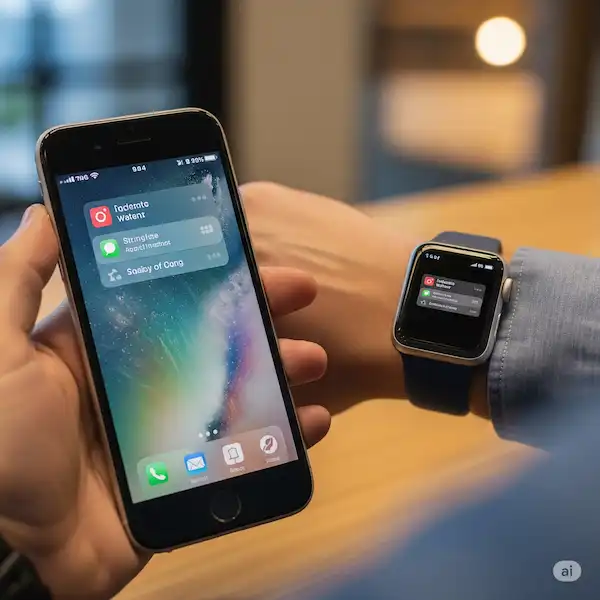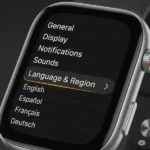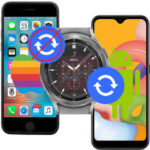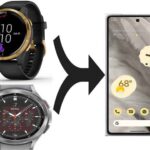Connecting Your Apple Watch to Your iPhone: A Comprehensive Guide
The Apple Watch is a powerful extension of your iPhone, offering a seamless experience when the two devices are connected. This article provides a detailed guide on how to connect Apple Watch to iPhone, explores the benefits of this connection, and highlights the features that rely on it.
Connect Apple Watch to iPhone: Step-by-Step
- Turn on your Apple Watch: Press and hold the side button until the Apple logo appears.
- Bring your iPhone close: Ensure your iPhone is nearby and has Bluetooth enabled. The Apple Watch setup screen should appear on your iPhone.
- Start the pairing process: Tap “Continue” on your iPhone.
- Choose a pairing method:
- Automatic Pairing: Hold your Apple Watch within the viewfinder on your iPhone. The watch face will be centered in the animation.
- Manual Pairing: If you can’t use automatic pairing, tap “Pair Manually” on your iPhone, then choose your Apple Watch from the list.
- Set up your Apple Watch: Follow the on-screen instructions on your iPhone to complete the setup process. This includes setting your Apple ID, creating a passcode, and choosing your settings.
- Sync your data: Your iPhone will begin syncing data to your Apple Watch. This may take a few minutes.
Benefits to Connect Apple Watch to iPhone
- Seamless Communication: Make and receive calls, send and receive texts, and get notifications directly on your wrist.
- Health and Fitness Tracking: Monitor your activity levels, track workouts, and get insights into your health.
- Apple Pay: Make secure purchases with Apple Pay directly from your watch.
- App Integration: Access a wide range of apps on your wrist, from productivity tools to entertainment.
- GPS and Navigation: Use GPS for accurate workout tracking and get turn-by-turn directions.
Functions That Require You Connect Apple Watch to iPhone
While some basic functions of the Apple Watch work without a direct connection to your iPhone, many features work best, or only work when connected.
- Cellular Features: If you have a cellular Apple Watch, you’ll need a connection to your iPhone (or a cellular plan) to make calls, send texts, and use data when away from Wi-Fi.
- Notifications: While some notifications may be cached, a live connection ensures you receive all notifications promptly.
- GPS (for some models): Some Apple Watch models rely on the iPhone’s GPS for accurate location data.
- Streaming Music and Podcasts: Streaming requires a connection to Wi-Fi or cellular.
- Advanced App Functionality: Many apps require a connection to the iPhone to access data or perform complex tasks.
Apple Watch and Android Phones
It’s important to note that Apple Watches are not compatible with Android phones. They are designed to work exclusively with iPhones. You will not be able to connect or use an Apple Watch with an Android device.
The Connection Between Apple Watch and iPhone
The connection between the Apple Watch and iPhone is built on a foundation of Bluetooth and Wi-Fi. When your devices are nearby, they primarily use Bluetooth for communication, which is energy-efficient. When further apart, they can use Wi-Fi (if both are on the same network) or, in the case of a cellular Apple Watch, a cellular connection. This seamless transition ensures your watch stays connected and functional, regardless of your proximity to your iPhone. The connection allows for real-time data synchronization, ensuring that information like notifications, health data, and app updates are consistent across both devices.
Frequently Asked Questions (FAQ) – Connect Apple Watch to iPhone
Q1: Can I connect my Apple Watch to an Android phone? A1: No, Apple Watches are exclusively designed to work with iPhones and are not compatible with Android phones.
Q2: My Apple Watch isn’t pairing with my iPhone. What should I do? A2: First, ensure both devices have Bluetooth enabled. Try restarting both your Apple Watch and iPhone. Make sure your Apple Watch is charged. If issues persist, you can try resetting your Apple Watch and starting the pairing process again.
Q3: Do I need an iPhone nearby for my Apple Watch to work? A3: For most functions and a seamless experience, an iPhone nearby is recommended. While some basic features like timekeeping and pre-loaded fitness tracking can work offline, many features like receiving notifications, making calls (without cellular), and using most apps require a connection to your iPhone or a Wi-Fi network.
Q4: What’s the difference between a GPS-only Apple Watch and a GPS + Cellular Apple Watch regarding connection? A4: A GPS-only Apple Watch needs to be connected to your iPhone (via Bluetooth or Wi-Fi) to receive calls, texts, and use data when away from Wi-Fi. A GPS + Cellular Apple Watch can do these things independently, even if your iPhone isn’t nearby, as long as you have an active cellular plan for your watch.
Q5: How does the Apple Watch connect to my iPhone? A5: The Apple Watch primarily uses Bluetooth for a low-power, close-range connection. If both devices are on the same Wi-Fi network, they can use Wi-Fi for communication when further apart. Cellular models can also use a cellular connection to stay connected when your iPhone isn’t nearby or on Wi-Fi.
Q6: Can I set up an Apple Watch without an iPhone? A6: No, an iPhone is required to set up an Apple Watch for the first time and to manage its settings and apps.
Q7: Will all my iPhone notifications show up on my Apple Watch? A7: By default, many common notifications from your iPhone will mirror to your Apple Watch. You can customize which app notifications appear on your watch through the Apple Watch app on your iPhone.
Additional helpful information
Help to install apps to your Apple watch – How to Install Apps On Your Smartwatch? – A Simple Guide




